Footie we love!
As much as we love to travel, both of us are footie fans as well! Not that we are good in it, but we enjoy watching a game of football together especially when it comes to our beloved clubs (Kops or Red Devils anyone?). It was seriously a dream come true for us to be able to visit not only our football club’s stadium but also other great stadiums across Europe and the UK… therefore we wanted to create a page dedicated to our love for the game.
Which stadium ranks among the best? Take a walk with us and find out…
UK
WEMBLEY STADIUM
Nearest tube station – Wembley Park
England’s new national football stadium opened its doors in 2007 in time for the FA CUP final after severe delays. The stadium itself is enclosed on all sides and the most prominent and unique feature is the huge steel arch that can be seen for many miles across London. It also has a statue of Bobby Moore in front of the stadium. Wembley Stadium with its seating capacity of 90, 000 (2nd largest in Europe) is relatively easy to reach due to the close proximity of the London Underground tube station. By the way, if you fancy some Swedish meatballs after the stadium tour, IKEA is just within the vicinity.
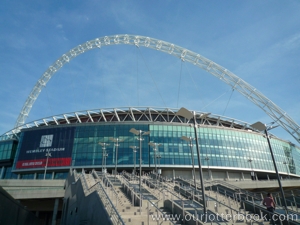
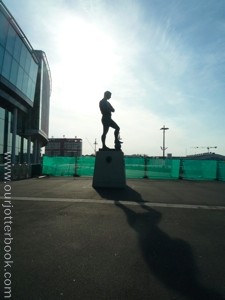

ENGLISH PREMIER LEAGUE
ARSENAL F.C. – EMIRATES STADIUM
Nearest tube station – Arsenal
The Emirates Stadium, home to Arsenal F.C., is one of the largest football grounds in London. Like Wembley, it is enclosed on all sides and can hold up to a capacity of 60,000. The stadium is a 10 min walk from the nearest tube station but there are signs and directions that will lead you to it easily. Started construction in 2003 and finished by 2006, Arsenal moved into the Emirates Stadium after 93 years in Highbury and have not won any major trophy since.
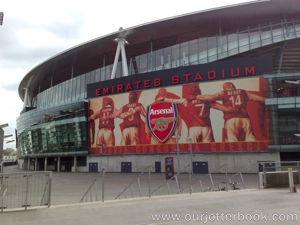
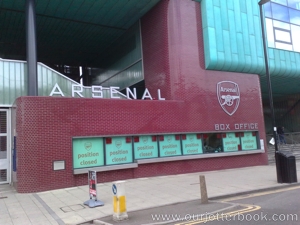

CHELSEA F.C. – STAMFORD BRIDGE
Nearest tube station – Fulham Broadway
Located in Fulham, Stamford Bridge is home to ‘Chelski F.C.’ since 1877. It has a sitting capacity of about 41,000 and is enclosed on all sides. Outside the stadium, giant posters of famous ex-Chelsea players like Marcel Desailly, Gianfranco Zola etc decorate the surrounding walls leading to the Mega-store. It’s fortunes have turned since Russian billionaire Roman Abramovich bought over the club and injected huge amount of funds to the club to buy expensive and reputable players like Andrei Shevchenko (£30.8 million) and Fernando Torres (£50 million). Maybe it would be prudent to actually invest in expanding the 41,000 seater stadium instead.
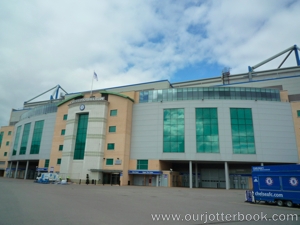
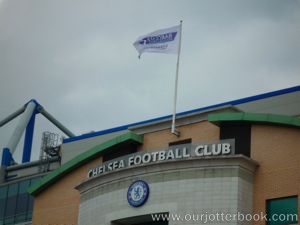
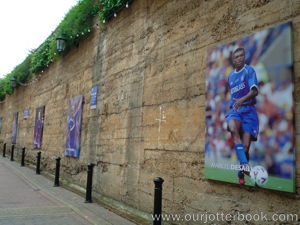
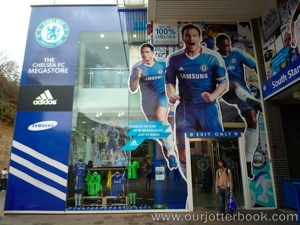
FULHAM F.C. – CRAVEN COTTAGE
Nearest tube station – Fulham Broadway
Probably one of our favourite stadiums due to its unique geographical location. On one side of the stadium is the Riverside Stand aptly named because it rests along the River Thames, over looking the surrounding river banks. At the other end, is the red brick facade of the Johnny Hayes Stand together with its namesake statue and the stadium store, facing the streets and quiet neighbourhood. The statue of Michael Jackson that was unveiled recently by club owner and businessman Mohamed Al-Fayed is the only thing that stuck out like a sore thumb (maybe some other football legends like Sir Bobby Robson should deserve a statue instead?). Having said that, watching a match here in this modest 25,000 seater could really prove to be a unique experience compared to other clubs with their grand stadiums.

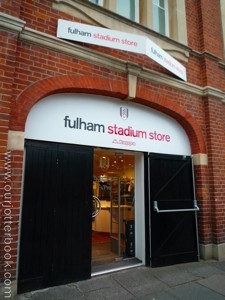
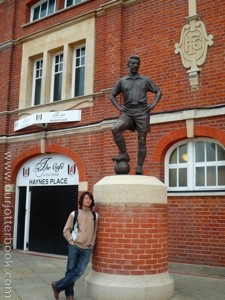
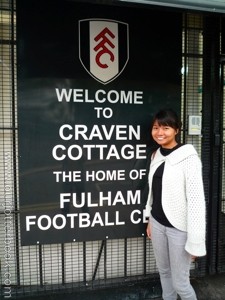
LIVERPOOL F.C. – ANFIELD STADIUM
Bus services – 26 (Paradise St. bus station), 17B, 17C, 17D and 217 (Queen square bus station)
Anfield, the stadium famous for it’s passionate atmosphere was actually once a home ground for Everton Football Club when it first opened its doors in 1884. After just 11 years of tenure, Everton moved out of Anfield after disagreement over rent. In 1892, the pioneers of Liverpool played their first match in Anfield against Rotherham and beat them 7-0. A year later, Liverpool started their first league match against Lincoln with a 4-0 win.
The four stands in the stadium, which has a seating capacity of slightly more than 45,000 were namely, the Main Stand (the oldest stand which houses the dressing room and where the players come out from the tunnel), Centenary Stand, Anfield Road and most notably, the Spion Kop (the Kop for short) where die-hard Kopites sings their heartfelt rendition of the club’s anthem “You’ll Never Walk Alone”. The title of the anthem adorns the top of the Shankly Gates as a tribute to former manager Bill Shankly and a statue of him is erected outside the club’s store. Just beside the Shankly Gates, is the Hillsborough memorial, for the 96 Liverpool supporters who died due to failure of crowd control during a 1989 FA Cup semi-Final match against Nottingham Forest, resulting in a human crush disaster. In memory of the victims, 2 eternal flames can be found on each side of the Liverpool crest. Another gate outside the Kop, “The Paisley Gateway”, was erected in honour of Bob Paisley, who managed Liverpool after Bill Shankly’s resignation. News of Shankly’s resignation had fans distraught, as he was a great manager who knew the importance of loyal fans to a successful club like Liverpool therefore till this day, Liverpool fans are still regarded as one of the best supporters in football.
Linked post:
Anfield and the city of Liverpool
Liverpool vs West Bromwich Albion 1-0 (29/08/2010)
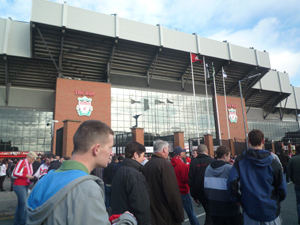
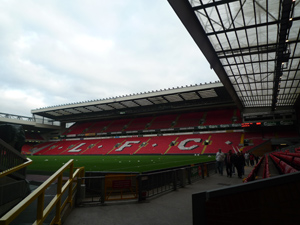
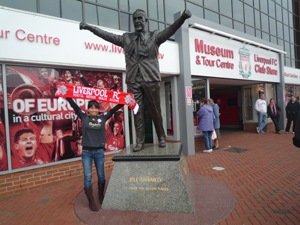
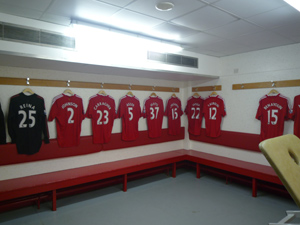
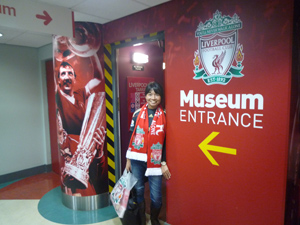
MANCHESTER UNITED F.C. – OLD TRAFFORD
Nearest tram station – Old Trafford
The ‘Theatre of Dreams’ aptly named by club legend Sir Bobby Charlton is the UK’s second largest football stadium with a seating capacity of close to 76, 000. The stadium is one of the most recognisable stadiums in the world and this is largely due to the huge popularity and large fan base Manchester United has around the world.
The stadium has 4 stands: The North stand is the largest and highest (3 tiers) among the four. It is also where the ‘Red Cafe’ and the club museum is located. The South stand is where the dugout (elevated to give the manager and coaches a better view of the game) is located. The ‘Munich Tunnel’ is also located in the south stand. It is a memorial for the Munich air disaster in 1958 where about half of the team died in the crash whilst heading back to Manchester from a European game. The East Stand is where the club’s huge 17, 000 square feet megastore is located. Just above the megastore, stands a statue of Sir Matt Busby, the club’s 2nd longest serving manager. Just across the street stands a statue of United’s ‘Holy Trinity’ (George Best, Dennis Law, Sir Bobby Charlton). The West Stand is also known as the Stretford End. The most rowdy and outspoken fans of Manchester United are usually seated here chanting on as the team plays. A truly magnificent stadium for both club and football fans alike.
Linked post:
Old Trafford and the city of Manchester
Manchester United vs Liverpool FC 3-2 (19/09/2010)
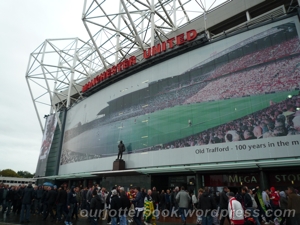
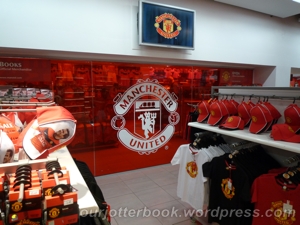
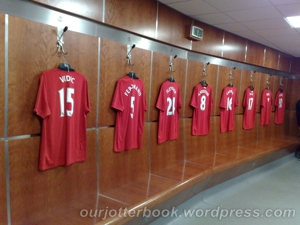


NEWCASTLE UNITED F.C. – ST JAMES PARK
Located in the heart of the city of Newcastle-upon-Tyne, this stadium is as accessible as you can get! Holding a sitting capacity of about 52, 000 it is certainly one of the largest in the Premier League (just behind Manchester United F.C. and Arsenal F.C.). The higher end of the asymmetrical stadium offers an unobstructed view across the city. A nightspot called ‘Shearer’s’, so aptly named after one of Newcastle United’s favourite sons, Alan Shearer is also located at the premise for a great time for after work/game drinking. Any supporter would be damn proud to have a fine stadium such as this.
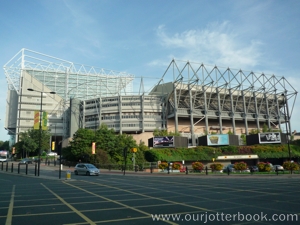
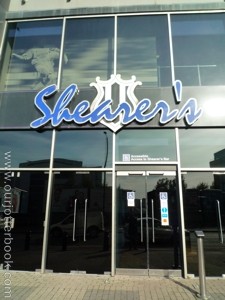
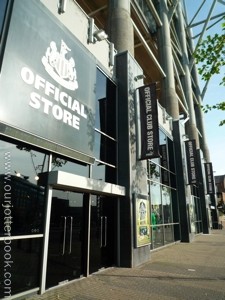
TOTTENHAM HOTSPURS F.C. – WHITE HART LANE
Bus services – 149, 259 and 279 (from Seven Sisters Station)
At a glance, the exterior of White Hart Lane definitely does not look much like one would imagine of a football stadium. But amongst the old buildings in the grim neighbourhood lies Tottenham Hotspurs F.C. which moved into the said stadium in 1899. White Hart Lane is not very accessible as you had to walk a good 20mins from the nearest tube station to reach. Even though the stadium has been renovated many times, it could only hold a capacity of about 36,000. A club of this stature certainly deserves better. Personally i would have preferred them to move in to the Olympic stadium rather than having it awarded to West Ham United F.C. (who are in the championship at the time of writing).
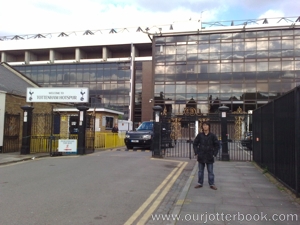
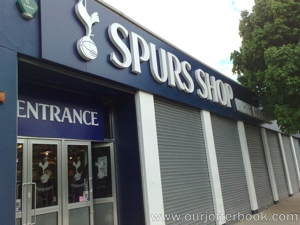
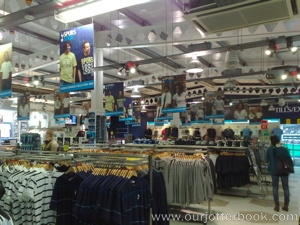
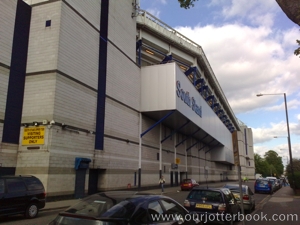
WEST HAM UNITED F.C. – BOLEYN GROUND
Nearest tube station – Upton Park
The Boleyn Ground, or more commonly known as Upton Park is home to West Ham United F.C.. From the exterior, the main entrance seem to mimic the club’s crest of a castle with 2 towers on each side while colours of claret and sky blue are embraced from the exterior to the seats in the stadium to give it a identity that is closely linked with the club like most stadiums in the UK. The stadium, with a holding capacity of about 35,000 is easily accessible by the tube or by the many bus services that serve the grounds. Before the start of every home game, the song ‘I am blowing bubbles’ will be aired with fans blowing soap bubbles.
Linked post:
West Ham vs Chelsea 1-3 (11/09/2010)
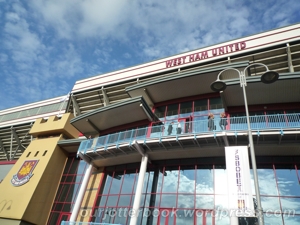
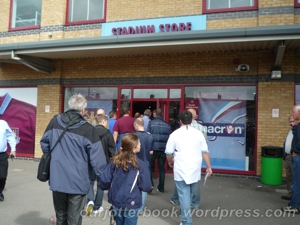
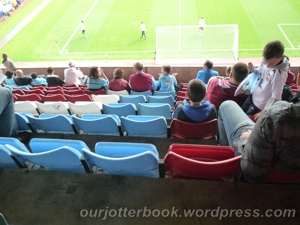
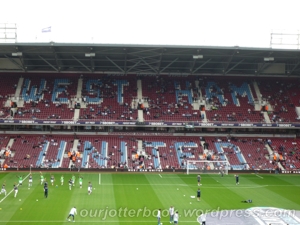
SCOTTISH PREMIER LEAGUE
We don’t follow the SPL (Scottish Premier League) so we knew little about the teams in the league (well except for Rangers and Celtic of course). In any case, we were footie fans so we took the opportunity to visit the 2 ‘Old Firm’ clubs of Glasgow as well as a footie club that is just a stone’s throw away from where we were based in Edinburgh.
CELTIC F.C. – CELTIC PARK
Bus services – 61, 62 and 64 (heading east from the city centre)
Being one half of the ‘old firm’, Celtic Park is impressive. Located on the eastern part of Glasgow, one side of the stadium rests just beside the Eastern Necropolis. Most of the stadium is in green and white like the club’s colours. If you look closely enough, the red brick tiles that form the main entrance of the stadium, you will be able to see that each brick tile has dates and names of people being engraved in it. The statue on the left of the main entrance is Celtic F.C founder Brother Walfrid, an Irish Marist Brother. Celtic Park has the 6th largest stadium in the UK, holding a seating capacity of about 60,000. One could only imagine what the atmosphere would be like when Celtic F.C. hosts their main rivals Rangers F.C.
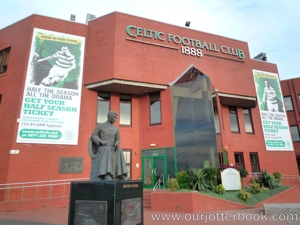
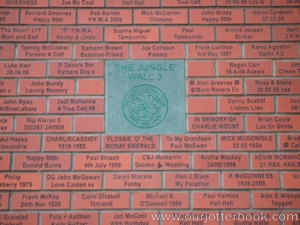
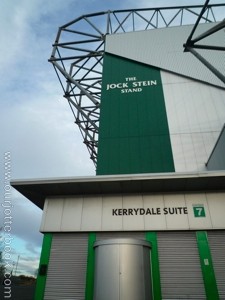
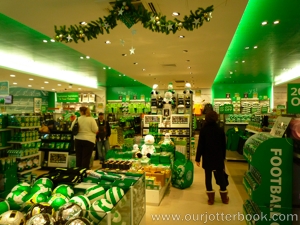
RANGERS F.C. – IBROX STADIUM
Nearest underground station – Ibrox SPT Subway
On the West side of Glasgow lies the other half of the ‘old firm’. Ibrox Stadium, home of Rangers F.C. is one of the oldest stadiums in Europe. It is constructed in 1899 and after numerous renovations amidst 2 partial stadium collapses in 1902 and 1971, the stadium has a seating capacity of about 51,000. There is a statue of John Grieg just by the Bill Struth main stand that serves as a memorial to the two disasters that devastated the stadium. Between the two Glasgow clubs, both have almost been in the top two positions in the Scottish Premier League since 1996. Rangers F.C. however hold a slightly better record over its green and white neighbours and will be keen to hold on to that for bragging rights.
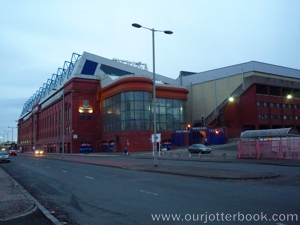
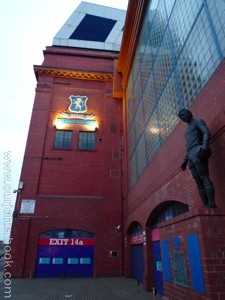
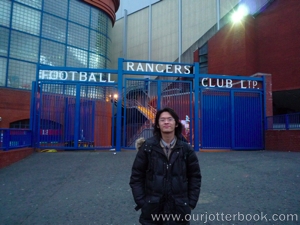
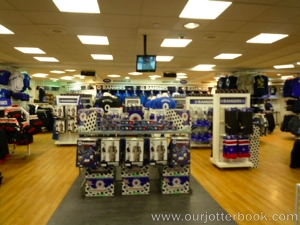
HIBERNIAN F.C. – EASTER ROAD
Bus services – 1, 4, 15, 26 and 44 (Lothian buses)
Moving on to the capital in Edinburgh, from where we stayed, we took a 10 minutes walk down Easter Road where the home of Hibernian F.C.(or Hibs for short) lies. The stadium holds a seating capacity of about 20,000 and is situated amongst a quiet community where the whole place stirs up only on match days, particularly against Hibs rival club Hearts of Midlothian F.C.. As with most stadiums of football clubs, Easter Road also has a club store just by the ‘Famous Five Stand’.
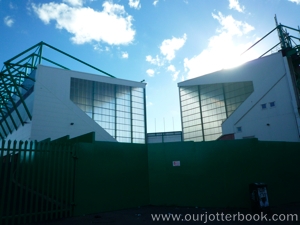
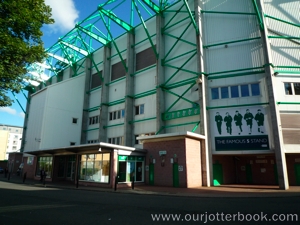
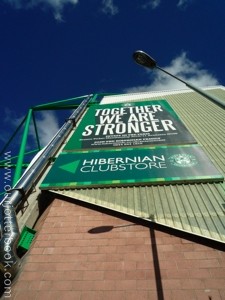
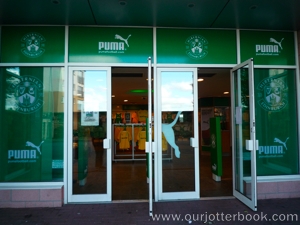
EUROPE
Many famous football clubs are scattered around Europe with big name teams like AC Milan, Bayern Munich and Barcelona appearing countless times on the UEFA Champions league. Therefore as footie fans, we have tried to make these famous stadiums an additional must-go attraction during our backpacking trip across Europe, as long as it is within our means.
GERMANY
BAYERN MUNICH, TSV 1860 MUNICH – ALLIANZ ARENA
Nearest U-bahn (metro) station – Fröttmaning
Technically speaking, the Allianz Arena plays home to 2 football clubs in the Bundesliga, just like the San Siro Stadium in Milan. However, people tend to think that the Allianz Arena are only exclusive to FC Bayern Munich. Contrary to what most people think, the Allianz Arena is also home to TSV 1860 Munich who plays in the 2nd league of the Bundesliga. It is easy to differentiate which team is playing as one unique feature of the 69,000 seater stadium at night is the stadium will glow Red when Bayern Munich is playing, blue when TSV 1860 Munich is playing and white when the German national team is playing.
Linked post:
Railing thru Europe: Stop 12.6 Germany – Munich
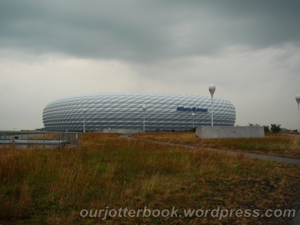
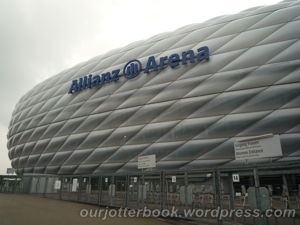

HERTHA BSC – OLYMPIASTADION
The stadium that hosted the 2006 World Cup Finals, the Olympiastadion is the largest stadium in Germany in terms of seating capacity at 74, 500. It is the stadium where French legend Zinedine Zidane played his last competitive match for his country. He received a red card after he gave italian defender Marco Materazzi a headbutt during the extra time of the finals which Italy won on penalties.
The stadium is located west from the city and can be reached easily by the U-bahn or S-bahn from the city. It is also the home stadium for Hertha BSC which plays in the Bundesliga.
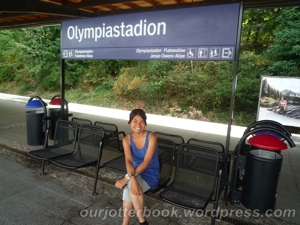
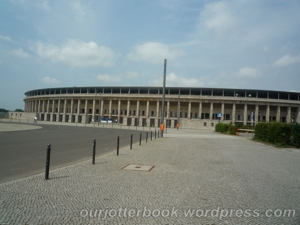

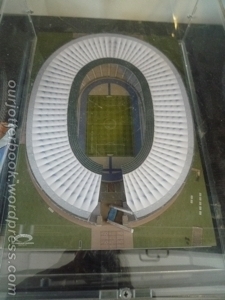
ITALY
AC MILAN, INTERNAZIONALE – STADIO GIUSEPPE MEAZZA (SAN SIRO STADIUM)
Nearest tram – 16 from city centre
No local derby gets bigger than the ‘Derby della Madonnina’, also known as the Milan derby. The rivalry is much worse compared to other football derby as both have the Stadio Giuseppe Meazza (or more commonly known as San Siro) as their home court. Situated near many horse stables, the 81, 000 seater is an imposing stadium as it is one of the largest club stadiums in Europe with a unique architectural character that mirrors no other. While it adopts a neutral colour to be fair to the two clubs, both clubs have their own locker rooms that are distinctive from each other. The club also shares a museum which consists of the medals and honours both club has. Furthermore, the displays also has interesting stuff dedicated to legends that played for both clubs like Roberto Baggio. A must see if you’re a true footie fan.
Linked post:
Railing thru Europe: Stop 4.1 Italy – Milan
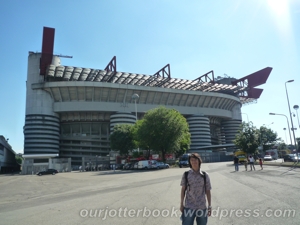

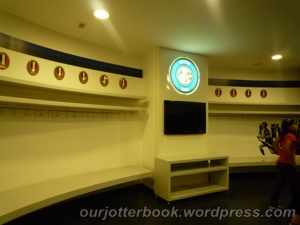
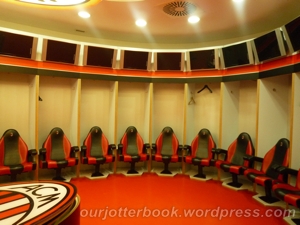
ACF FIORENTINA – STADIO ARTEMIO FRANCHI
Bus services – 17 (from Santa Maria Novella) and 11 (from Piazza del Duomo)
Located in the north east of beautiful Florence away from the city centre, the Stadio Artemio Franchi stands out among the quiet neighbourhood with it’s 70 ft ivory tower glistening in the morning sun. The home of the ‘Viola’ or ACF Fiorentina has a seating capacity of about 47, 000 and is reachable by local buses or you can take a scenic 20 min walk from the historic city centre to reach there. One of the most ‘open-concept ‘ stadiums we’ve seen, only 1 side of the 4 stands is sheltered, meaning that if it rains, and you aren’t seating in the sheltered stand, be prepared to bring out your umbrella!
Linked post:
Exploring the beautiful city of Florence
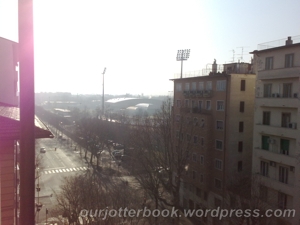
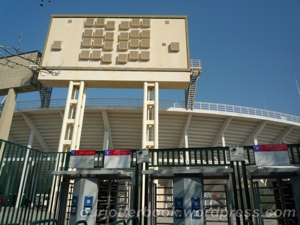
PORTUGAL
S.L. BENFICA – ESTADIO DA LUZ
Nearest metro station – Colégio Militar/Luz
The biggest stadium in Portugal in terms of seating capacity belongs to S.L. Benfica at about 65, 000. ‘The Stadium of Light’ is mostly clad in red to mimic the club’s colours while also to differentiate itself from F.C Porto (in blue) and Sporting CP (in green). Together they make up as the 3 most succesful clubs in Portugal.
The stadium grounds also contains a statue of Portuguese legend Eusebio, a museum and a megastore. Shopping in the megastore will be a very unique experience as the store has a live eagle which you can take pictures with! Not to worry as there are professional bird trainers there who will make the photo taking experience a very pleasant one. This eagle plays a very important and unique ritual for S.L. Benfica as it would fly around the stadium a couple of times and land on the club’s crest placed on the centre of the pitch during the opening of the home games. Imagine what a magnificent sight that would make as thousands of spectators cheered on…
Linked post:
Railing thru Europe: Stop 1.2 Portugal – Lisbon
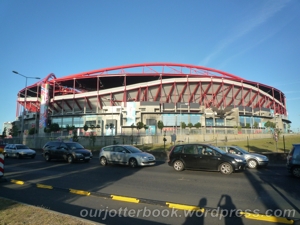
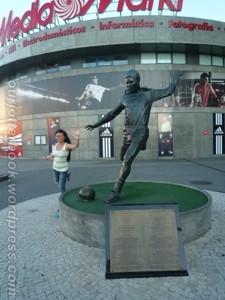
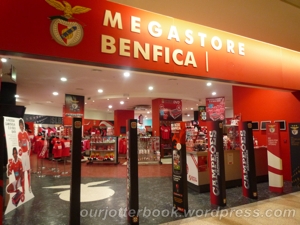
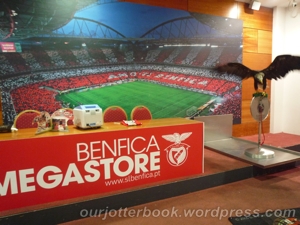
F.C. PORTO – ESTADIO DO DRAGAO
Nearest metro station – Dragao
Arguably the best team in Portugal, F.C. Porto has been quite successful in recent times partly in due to the brilliance of wonder coaches like José Mourinho and more recently André Villas-Boas. Estadio Do Dragao is located just a little off to the north east of the city centre but it is easily accessible by the excellent metro system Porto has (the station is just next to the stadium). Due to its origins from the club crest, the 50, 000 seater stadium has a stylized dragon affixed outside the stadium and it is also the reason why the name of the stadium when translated to English means ‘Stadium of the Dragon’.
Linked post:
Railing thru Europe: Stop 1.1 Portugal-Porto
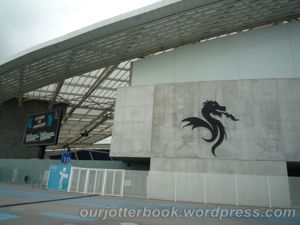
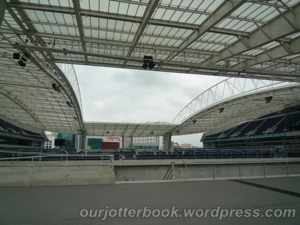
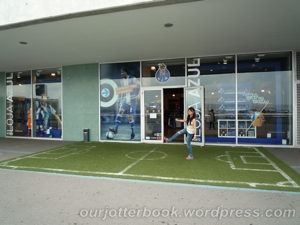
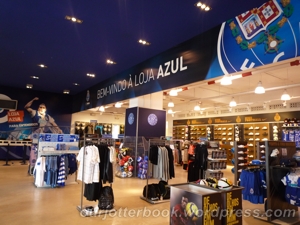
SPAIN
REAL MADRID C.F. – SANTIAGO BERNABEU
Nearest metro station – Santiago Bernabeu
The Santiago Bernabeu stadium, named after the former Real Madrid president, is home of the ‘Galacticos’. The 85, 000 seater is located north of the city and is easily accessible as the metro station (which is also called Santiago Bernabeu) is just right outside its doorstep. The compounds of the stadium also includes the megastore (although its more of an Adidas store rather than a club store), and the ‘Realcafe’ where you can have magnificent views of the stadium while having a drink there.
The stadium has seen the likes of many football superstars and these players are coined the ‘Galacticos’. The first generation of ‘Galacticos’ comprises of popular and expensive players such as Zinedine Zidane, Luis Figo, David Beckham and Ronaldo. While many would consider them as the best that would ever grace the game, they failed to perform as a team and the limelight would fall to their eternal enemies, F.C. Barcelona. As subsequent seasons ended with F.C. Barcelona being a dominant force, Real Madrid C.F. would attempt to form a second generation of ‘Galacticos’ headed by the world’s most expensive player, Cristiano Ronaldo (£80 million pounds). Only time will tell, if he and ‘Los Blancos’ can finally break the hold of supremacy from Lionel Messi and F.C. Barcelona.
Linked post:
Railing thru Europe: Stop 2.1 Spain – Madrid
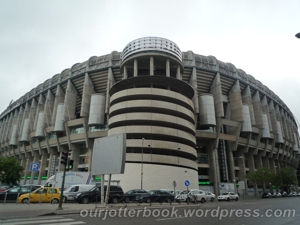
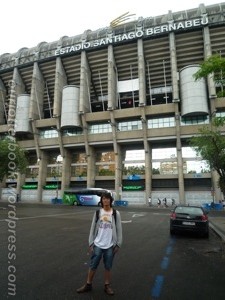
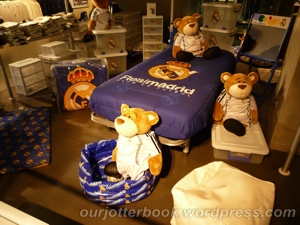
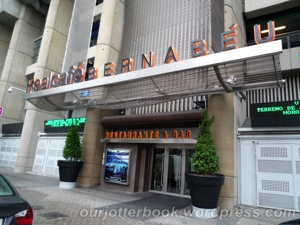
F.C. BARCELONA – CAMP NOU
Nearest metro station – Les Corts (Line 3) and Collblanc or Badal (Line 5)
Located just west of the city centre, and a 10 minutes walk from the nearest metro station, is Camp Nou. The biggest and most grand stadium in Europe, Camp Nou has a seating capacity of slightly over 99, 000. It is the epitome of how a football stadium should be, although it has the usual facilities such as a megastore and a club museum, one unique feature is the mini chapel. Here, the players would spend some time in silence before every home game.
The stadium is very much befitting for a club like F.C. Barcelona and the seats of the 3 tier stadium take after its club colours of Red and Blue with the words ‘MES QUE UN CLUB’ in yellow clearly positioned in the 2nd tier; in English, those words mean ‘more than just a club’. F.C. Barcelona is statistically one of the most popular football club in the world and just like the many legendary football players (Johan Cruyff, Romario and Maradona) that had once graced the grassy field of the stadium, many more subsequent legends of the club will too.
Linked post:
Railing thru Europe: Stop 2.2 Spain – Barcelona
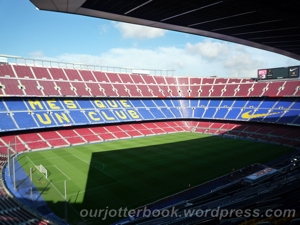
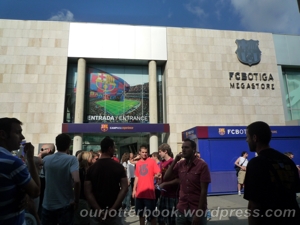
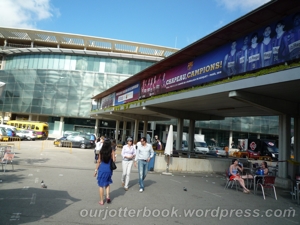

(P.S. As much as we would love to visit all of them, we had some misses like the Ajax Stadium in Amsterdam, Juventus Stadium in Turin and many others due to the time constraints and distance involved. In future though we would definitely jump at the opportunity to visit those stadiums when we get the chance to!)
Jon and Yee



brilliant post I’m a giant footy fan from London
Hi there! I just wish to give an enormous thumbs up for the good info you might have here on this post.
I will be coming again to your weblog for extra soon.
It does not take ideal time for making a number of ideas to the future and it’s time for it to be happy.. my site We have learn this specific put up in case I could merely I must recommend anyone number of intriguing points or recommendations. You may can certainly publish future content articles in regards to this post. I’m going to find out much more areas of the item!